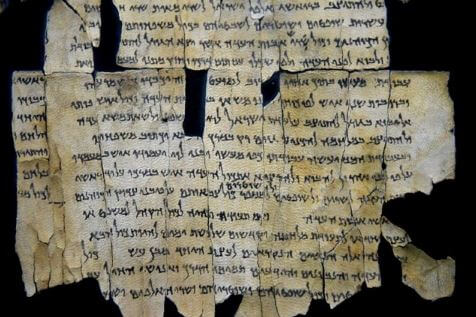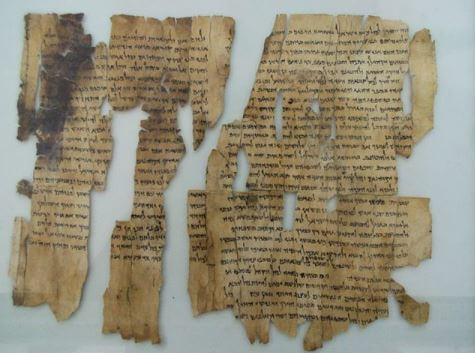 7
7




 7
7

 2
2

 21. 04. 2024
21. 04. 2024

 20. 04. 2024
20. 04. 2024
 4
4

 19. 04. 2024
19. 04. 2024
 05. 01. 2021
05. 01. 2021

The Dead Sea Scrolls have fascinated professionals for more than half a century. And according to the results of a new study, these ancient texts still reveal their secrets to today's scientists. The research is now illuminated by the so-called Temple Scroll, as published by the Science Advances website. This 8-meter-long manuscript is named after the contents related to an unknown Jewish temple and is remarkably well-preserved. But why did he survive in such significantly better condition than his paper colleagues? The study found this by a detailed analysis of the coil surface.
The 19 leather straps contained in the Temple Scroll "are bleached with alum salt treatment," writes The Guardian. And it is this mineral element that plays a crucial role in its preservation. The article further states that "the text is written on a surface containing a thick layer of minerals."
After analysis by X-rays and spectroscopic equipment, the sulfate layer "appears to" point to a unique ancient manufacturing technology that parchment was surface-treated by the addition of an inorganic layer, "according to Science Advances.
Because Temple Scroll is the only scroll to receive this treatment, it has caused quite a stir in academic minds about what it might mean. Most important, however, is the fact that the minerals in question do not come from the Dead Sea area. The Guardian quotes study co-author Prof. Admira Masice, who says: "These salts are not typical of anything we know about, in connection with this period and the formation of parchment."

Part of the Dead Sea Scroll No. 28a (1Q28a) from Qumran Cave 1. Photo: Osama Shukir Muhammed Amin FRCP (Glasg) CC from SA-4.0
Although some disagree with this hypothesis, it is believed that the Temple Scroll was made elsewhere than in the Dead Sea region. It is therefore possible that the scroll was brought to this area from elsewhere. The fact that the determination of the origin of the scroll points to another place, of course, significantly adds to theories about its import to the Dead Sea.

Dead Sea Scroll Manuscripts usually date between 150 BC and 70 AD They are written in Hebrew, Aramaic and Greek, mostly on parchment, but some are also on papyrus and even copper. Photo by Ken and Nyetta CC up to 2.0
The latest find is part of a famous historical period. The Dead Sea Scrolls, extremely important to the Jewish religion, are at least 2 years old. They saw the light of day not thanks to archaeologists, but because of the negligence of one teenager. In the late 000s, a young Bedouin shepherd threw a stone into a cave on the northwestern shore of the sea near Qumran (today's West Coast). The stone shattered the clay pots in which the scrolls were stored. This loud sound quite accidentally drew the attention of the 40th century to the existence of these rare works. In the surrounding caves, a spiritual treasury with a range of about 20 - 20 scrolls was found. Live Science paints a less romantic picture and writes that they were found "under piles of debris and bat droppings." The pages describe "biblical texts, ancient calendars, and early astronomical observations."
The scrolls have undertaken several adventurous journeys over the years. Four of the originals appeared in the inconspicuous advertising section of the Wall Street Journal in 1954! They were the property of the Syrian Orthodox Archbishop Athanasius Yeshue Samuel, who, after a futile attempt to attract the interest of American universities, resorted to their advertising in the press.
Despite their vast acquaintance, no one knows for sure who actually created the scrolls. In 2013, History.com wrote of a "prevailing theory" that "they were the work of the Jewish population (Essen) who inhabited Qumran before the settlement was destroyed by Roman troops around 70 AD. Some scholars attribute scrolls to other groups, including early Christians and Jews from Jerusalem who passed through Qumran on the run from the Romans.
While the scrolls still require a lot of research, the important question is, how long will it last? Although the sulphate surface helped to preserve the writing, the minerals could also have a negative effect. Live Sciences notes: "As the salts detected in the coil are known to absorb moisture from the air, their presence could accelerate coil degradation if stored incorrectly."
On the brighter side, the unique preservation process provides scientists with some guidance on how the scrolls can be kept in the best possible condition for future generations to admire.